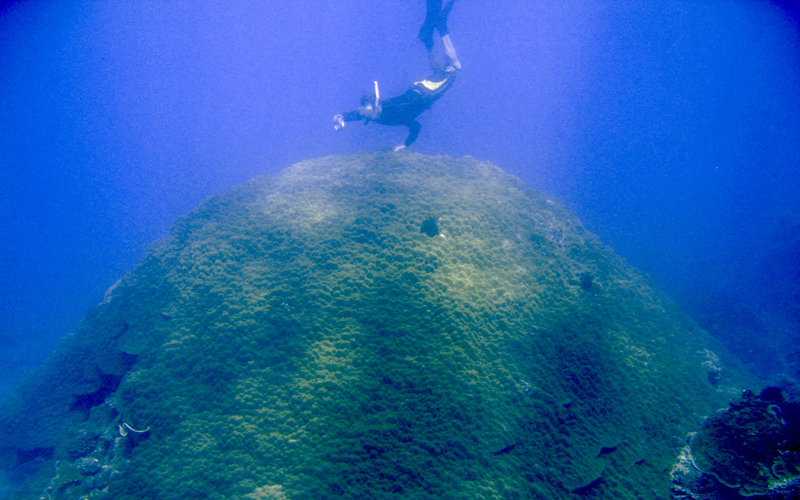Research
My research generally seeks to reconstruct past changes in climatic and environmental conditions in order to understand the mechanisms of abrupt climate shifts and their impacts on terrestrial and marine ecosystems. My approach often involves the application of multi-proxy geochemical analyses to coral or sediment archives for extraction of the most information possible. Ultimately, the goals include identifying the relative timing of rapid shifts in different locations, or reconstructing spatial patterns of variability in complex dynamic systems such as the North Atlantic Oscillation (NAO), El-Niño-Southern Oscillation (ENSO) and Southwest Asian Summer Monsoon (SASM). In addition, I use these techniques to investigate the responses of ecosystems to climate change. Multi-proxy records from sediments show the timing of vegetation changes following rapid shifts in climate. Recent work with corals is investigating the response of coral symbionts to environmental stress including thermal bleaching and exposure to pathogens.
The following are examples of some of my research:
Climate change and reef health from coral archives
Corals are ideal archives of paleoclimatic and paleoenvironmental information due to their aragonite skeletons, which accommodate numerous chemical proxy tools, and their high growth rates and annual density banding, which provide for well-dated records at up to weekly resolution that can extend back several centuries. My coral paleo research is focused on building records of sea surface temperature (SST), salinity, continental runoff and dust input, and anthropogenic pollution. Corals allow for reconstruction of spatial patterns of climate change, which is valuable for studying large-scale climate systems such as ENSO and the NAO.
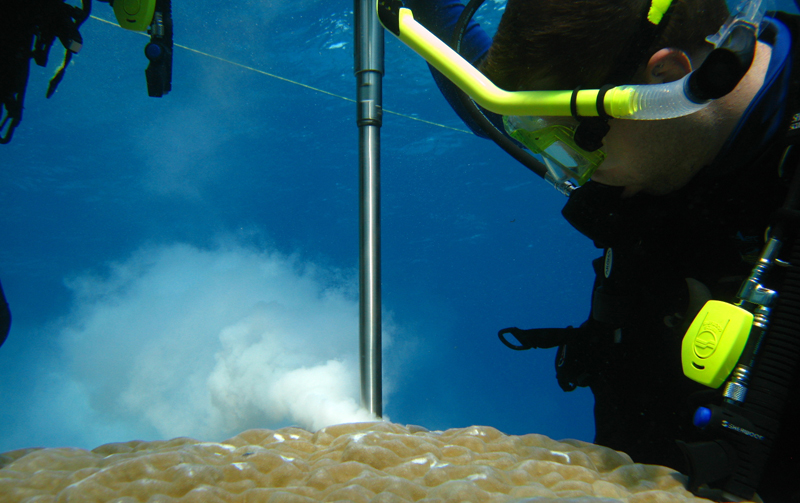
Red Sea
A major research effort has focused on the Red Sea, including seven field expeditions to map and drill long cores from massive coral colonies.
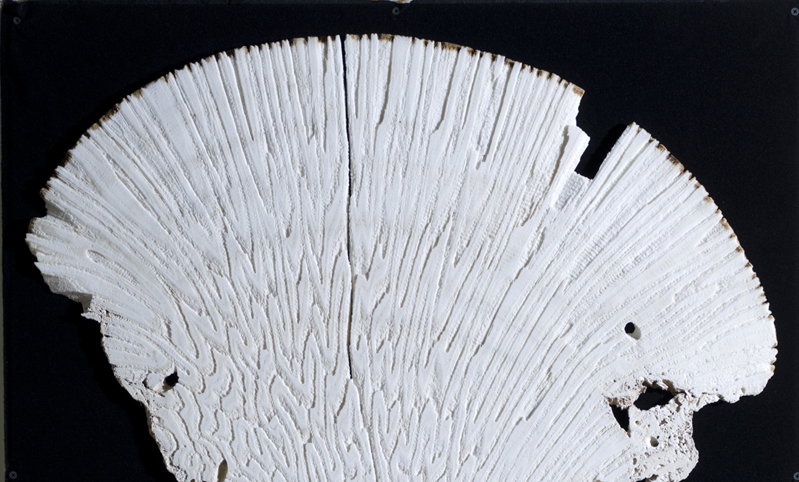
Bermuda
Our research in Bermuda has used multi-proxy analyses (Sr/Ca, d18O, 14C, d11B) to reconstruct different climatic and oceanographic conditions.
IndoPacific Warm Pool
On field expeditions to Vietnam and Micronesia, we recovered long cores extending back more than 450 years.
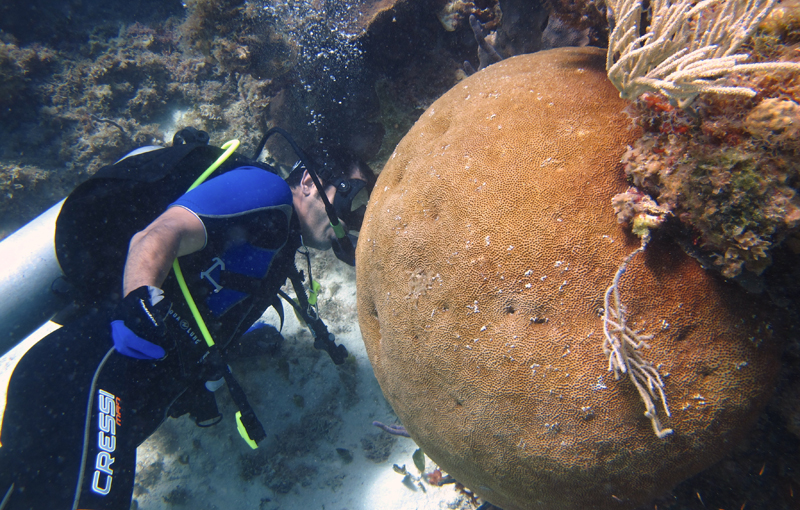
Caribbean
We have investigated land-use changes and sea surface temperatures from the Mesoamerican Reef to Cuba.
Coral Health
In addition to being reliable recorders of climate change, corals are also balanced symbiotic systems that serve as sensitive monitors of environmental degradation. Our research on coral health has centered on field studies of reef ecology and coral diseases, as well as culture studies of coral symbionts to investigate mechanisms of stress.
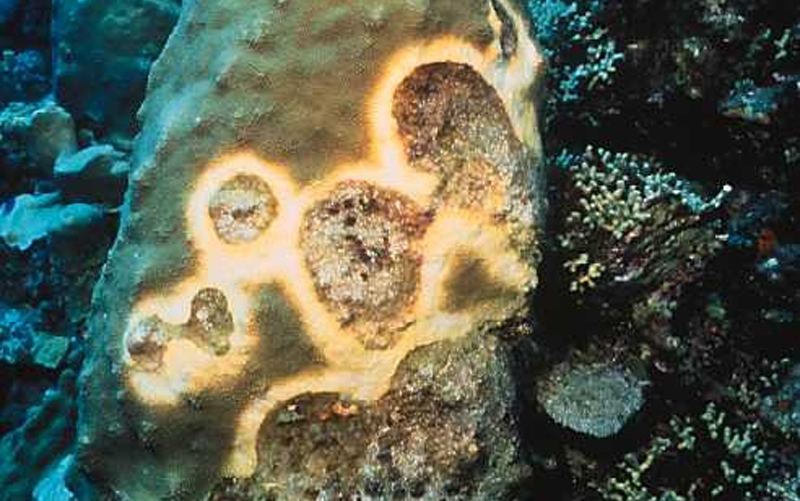
Reef Ecology
Ecological assessment surveys are used to quantify the prevalence of coral stress and disease in relation to environmental conditions.
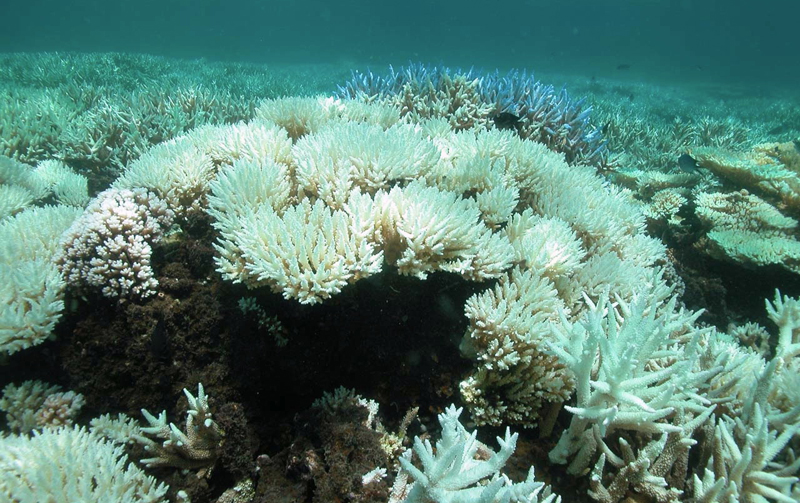
Culture Studies
Photosynthetic coral symbionts are exposed to stress in cultures to investigate how their lipid contents change.
Radiocarbon as a dating tool and geochemical tracer of the carbon cycle
Radiocarbon is a vitally important dating tool for numerous scientific disciplines, from climate and global change to archeology, but due to changes in the rate of 14C production and distribution between global reservoirs, the 14C “clock” runs at different speeds through time. Therefore, calibration of the 14C timescale to absolute calendar age is critical in order for radiocarbon dating to be accurate and comparable to other dating methods. Radiocarbon also has relevance to paleoclimate and carbon cycle research. I use box model simulations of the global carbon cycle to explore atmospheric and surface ocean D14C sensitivity to 14C production and carbon cycle changes. 14C records from corals show changes in deep water mixing and upwelling, providing insight into ocean circulation and formation of deep/intermediate water masses.
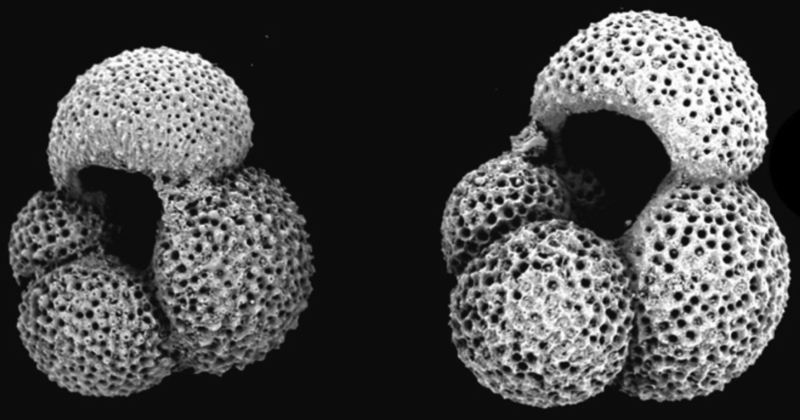
14C Dating
Calibration of the 14C timescale to absolute calendar age is critical for determining the relative timing of abrupt climate changes in different parts of the globe.
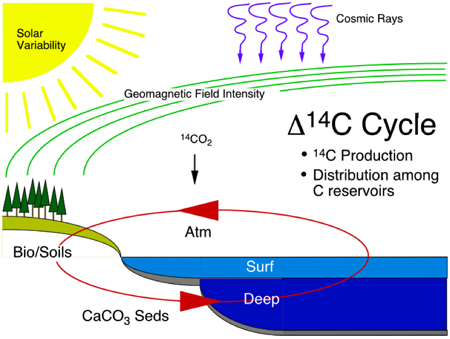
Carbon Cycle
14C is a valuable tool for studying changes in the global carbon cycle, particularly the rate of deep ocean ventilation.
Sediment Records of Climate and Environmental Change
One approach to reconstructing the precise relative timing of abrupt changes between different regions and climate systems is to extract as much information as possible from individual samples through the use of multiple climatic and environmental proxies. These proxies can include physical sedimentology as well as inorganic and organic geochemistry. Inorganic sediment proxies include trace element concentrations and isotopic measurements on foraminiferal shells. The use of organic biomarkers has focused on the development of novel climatic and environmental proxies, including in particular vascular plant leaf waxes as proxies for terrestrial vegetation types.
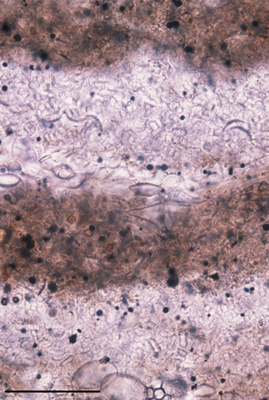
Varves and Physical Sedimentology
Annually laminated (varved) sediments provide both accurate dating and information about climate and environmental conditions.
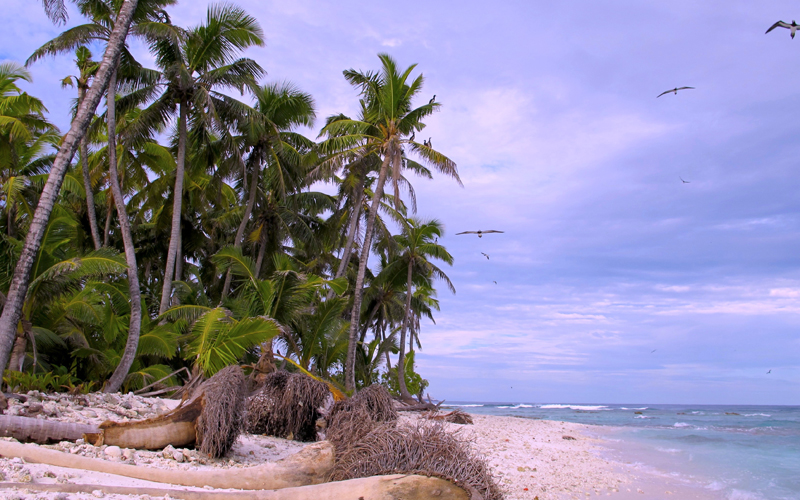
Biomarkers and Molecular Isotopes
Compound-specific isotopic analysis is a powerful tool for investigating past climate changes and environmental (vegetation) responses.
